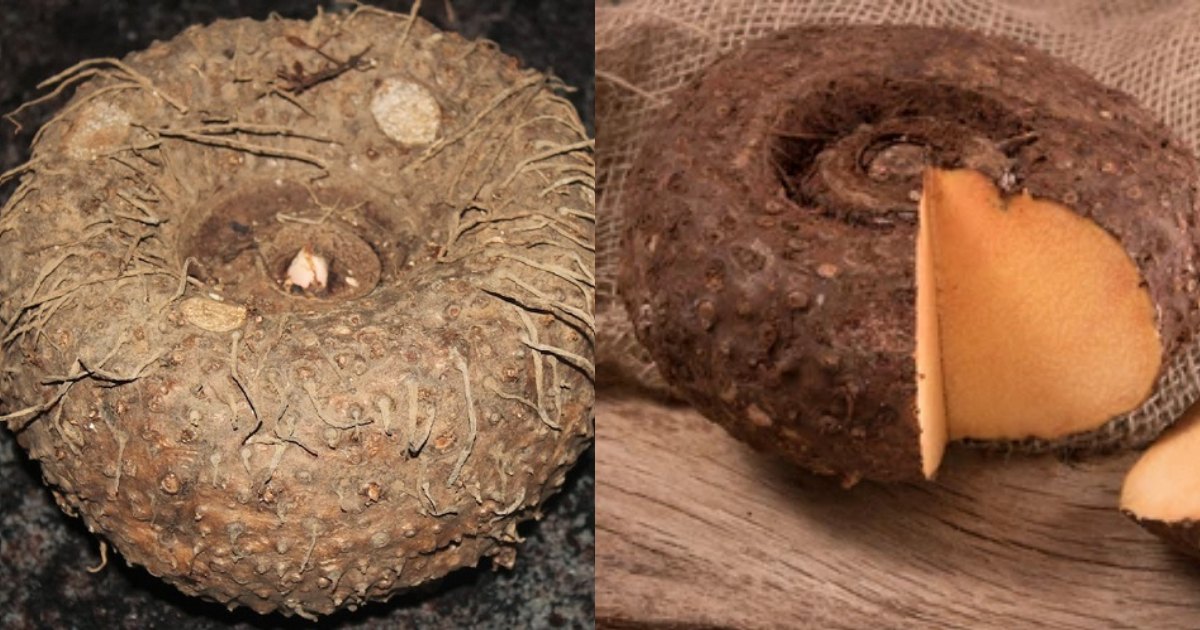
ഒരു തരി മണ്ണ് വേണ്ട ഇനി എവിടെയും ചേന വളര്ത്താം! മണ്ണില്ലാതെ ചാക്കിലെ ചേന കൃഷി 100 മേനി വിളവ് ഉണ്ടാക്കാം!! | Elephant Foot Yam Cultivation
Elephant Foot Yam Cultivation : വീട്ടിൽ പച്ചക്കറി തോട്ടം വേണമെന്ന് ആഗ്രഹിക്കുന്ന പലരും നേരിടുന്ന പ്രധാന പ്രശ്നങ്ങളിൽ ഒന്ന് സ്ഥല പരിമിതിയും മറ്റൊന്ന് ചെടി നടാൻ ആവശ്യമായ മണ്ണ് ഇല്ല എന്നതുമായിരിക്കും. എന്നാൽ വളരെ കുറച്ച് മാത്രം മണ്ണ് ഉപയോഗിച്ച് ഗ്രോബാഗ് ഉപയോഗപ്പെടുത്തി എങ്ങനെ ചേന കൃഷി ചെയ്തെടുക്കാമെന്ന് വിശദമായി മനസ്സിലാക്കാം.സാധാരണയായി ചേന ഉൾപ്പെടെയുള്ള എല്ലാ കിഴങ്ങുവർഗ്ഗങ്ങളും കുംഭമാസത്തിലാണ് നടുന്നത്.
ചെറിയ രീതിയിൽ മഴ ലഭിക്കുന്ന സമയത്താണ് കിഴങ്ങ് വർഗ്ഗങ്ങൾ സാധാരണയായി നടുന്നത്. അതിൽ തന്നെ കുംഭം 18 ആണ് ചേന നടാൻ ഏറ്റവും ഉചിതമായ ദിവസമായി കണക്കാക്കപ്പെടുന്നത്.ചേന വിത്ത് നടുമ്പോൾ ശ്രദ്ധിക്കേണ്ട ചില കാര്യങ്ങളുണ്ട്. അതായത് നല്ല വിത്ത് നോക്കി തിരഞ്ഞെടുത്ത് അതിന് നടുക്കുള്ള മുള ഭാഗം കുത്തി കളയാൻ പ്രത്യേകം ശ്രദ്ധിക്കണം. അതിനുശേഷം വിത്ത് നടുന്നതിന് 15 ദിവസം മുൻപെങ്കിലും ചാണകവും സ്യൂഡോമോണാസും ചേർത്ത ലായനിയിൽ വിത്ത് ഇട്ടു വയ്ക്കണം.
ടെറസിൽ നടുമ്പോൾ മണ്ണ് ഉപയോഗിക്കാൻ സാധിക്കാത്തതു കൊണ്ട് തന്നെ ചാക്കിൽ കൂടുതലായും കരിയിലയാണ് ഉപയോഗിക്കുന്നത്. ഇങ്ങിനെ ചെയ്യുന്നത് വഴി ചാക്കിന്റെ ഭാരം കുറയ്ക്കാനും കൂടുതൽ വിളവ് ലഭിക്കാനും വഴിയൊരുങ്ങും. കൂടാതെ ചാക്കിൽ ആവശ്യത്തിന് വളപ്രയോഗം നടത്തേണ്ടതും അത്യാവശ്യ കാര്യമാണ്. ചേന വിത്ത് നടന്നതിന് പോട്ട് മിക്സ് തയ്യാറാക്കുമ്പോൾ ചാരം, വളപ്പൊടി, എല്ലുപൊടി, വേപ്പിൻ പിണ്ണാക്ക് എന്നിവയുടെ കൂട്ടാണ് ഉപയോഗിക്കുന്നത്.
ഇവയെല്ലാം നല്ലതുപോലെ മിക്സ് ചെയ്തെടുത്തതിലേക്ക് അല്പം മണ്ണ് കൂടി ഇട്ടു കൊടുക്കാവുന്നതാണ്. അതിനുശേഷം ചേനയുടെ മുള വന്ന ഭാഗമെല്ലാം കത്തി ഉപയോഗിച്ച് കുത്തിക്കളഞ്ഞ് നാല് കഷ്ണങ്ങളായി മുറിച്ചെടുക്കുകയാണ് ചെയ്യുന്നത്. അതിനുശേഷം ചാക്കിൽ കരിയില നിറച്ച് അതിനു മുകളിൽ അല്പം മണ്ണിട്ട് ഓരോ ചേന കഷ്ണങ്ങൾ ഓരോ ബാഗിലായി വച്ചു കൊടുക്കാവുന്നതാണ്. അതിനു മുകളിലേക്കാണ് തയ്യാറാക്കി വെച്ച വളക്കൂട്ട് ഇട്ടു കൊടുക്കുന്നത്. അതിനു മുകളിൽ വീണ്ടും കരിയില ഇട്ട് നിറച്ചു കൊടുക്കണം. വിശദമായി മനസ്സിലാക്കാൻ വീഡിയോ കാണാവുന്നതാണ്. Elephant Foot Yam Cultivation Credit : AG World
Elephant Foot Yam Cultivation Tips – High-Yield Tuber Farming Guide
Elephant Foot Yam (Amorphophallus paeoniifolius) is a high-value tuber crop known for its nutritional value and profitable yield potential. Cultivating yam organically can be a smart income-generating crop for small farmers, especially in tropical and subtropical regions.
If you’re looking for profitable root crop cultivation, high-yield tuber farming, or organic elephant yam farming tips, this guide is for you.
Key Tips for Successful Elephant Foot Yam Cultivation
1. Ideal Climate & Soil
- Requires warm and humid climate with well-drained loamy or sandy loam soil.
- Soil pH should be between 5.5 and 7.0 for optimal growth.
- Avoid waterlogged fields — raised beds help prevent rot.
2. Land Preparation
- Deep ploughing followed by addition of organic manure (well-rotted cow dung or compost).
- Prepare ridges and furrows or raised beds for better drainage.
3. Seed Selection
- Use healthy, disease-free corms weighing around 500g–1kg.
- Treat corms with fungicide or Trichoderma before planting to avoid fungal infections.
4. Planting Time
- Best time for planting is March to June, depending on regional rainfall.
- Space plants 90 cm x 90 cm apart for adequate growth and tuber development.
5. Manure & Fertilizer Management
- Apply 10–12 tons/acre of organic manure before planting.
- Supplement with neem cake, vermicompost, and biofertilizers like Azospirillum and Phosphobacteria.
6. Irrigation & Weed Control
- Irrigate immediately after planting, then once in 7–10 days.
- Perform 2–3 rounds of weeding during the growth stage. Mulching can also control weeds.
7. Pest & Disease Management
- Common issues include collar rot and tuber rot.
- Use Trichoderma and maintain proper drainage.
- Practice crop rotation and avoid continuous planting in the same field.
8. Harvesting & Yield
- Harvest after 7–8 months when foliage turns yellow and dries up.
- Average yield: 20–30 tons/ha under good management.
Elephant Foot Yam Farming Tips
- Elephant foot yam farming techniques
- Organic tuber crop cultivation
- High yield yam farming tips
- Profitable root crops for small farmers
- Elephant yam soil and climate conditions
- Amorphophallus paeoniifolius farming
- Organic pest control for tuber crops
- Fertilizer schedule for elephant yam
